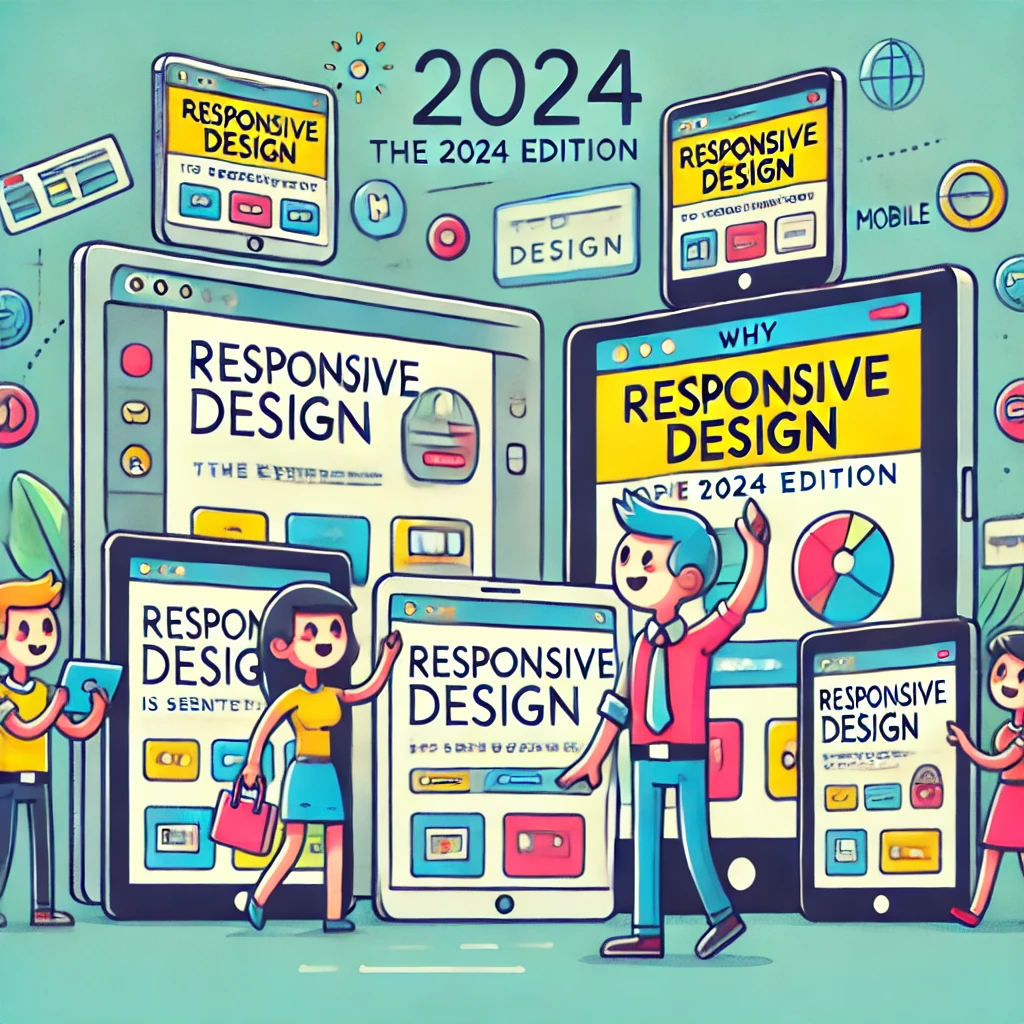Why Responsive Design Is Essential for Your Website: The 2024 Edition
Ever try browsing a website on your phone, and suddenly it’s like you’re playing a game of “Pinch to Zoom Olympics”? Or maybe you’ve encountered that site where the menu gets cut off, and you’re left wondering, “Did they hide the navigation as a puzzle?”
Well, that’s the headache non-responsive design creates. And believe me, in 2024, nobody has time for that! Responsive design is no longer just a “nice-to-have”—it’s an absolute must. Let’s break it down, with a bit of fun and flair, and show you why making your website responsive is the smartest (and possibly the least stressful) move you can make.
What Is Responsive Design?
Before we dive into the why, let’s tackle the what. Responsive design is like that magical chameleon of web development—it makes your website look amazing on any device, whether it’s a smartphone, tablet, laptop, or some futuristic wearable we haven’t even heard of yet.
Basically, responsive design ensures that your website adapts to whatever screen size it’s viewed on. No more zooming, pinching, or rotating your phone like you’re unlocking a secret level in Tetris. It just works.
1. Because Mobile Traffic Is Huge (and Still Growing)
Let’s get real. Your audience isn’t just browsing your site on a desktop while sipping coffee in their home office. Nope, they’re on their phones—at the grocery store, on the train, maybe even while pretending to pay attention in meetings (we don’t judge).
In fact, over half of global web traffic comes from mobile devices. If your website isn’t responsive, you’re basically telling half of your potential audience, “Hey, thanks for visiting, but good luck seeing anything!” And guess what? They won’t stay long enough to appreciate your beautiful (non-responsive) desktop site.
2. Google Really, REALLY Likes It
Here’s the thing: Google isn’t just a search engine; it’s the gatekeeper of web visibility. And when Google likes something, you want to pay attention. In 2024, Google has gone all-in on mobile-first indexing, meaning that the search engine predominantly uses the mobile version of a website for ranking purposes.
So, if your website is a jumbled mess on mobile, Google’s not going to be too happy. And when Google’s not happy, your search rankings suffer. Bottom line? Responsive design isn’t just good for your users—it’s crucial for your SEO.
3. User Experience = A Happy Audience
Imagine walking into a restaurant where the chairs are too high, the table wobbles, and the menu is printed in Comic Sans (the horror!). Would you stay? Probably not.
Your website is the same. A good user experience keeps people engaged and coming back for more. With responsive design, your users get a seamless experience across all devices—whether they’re lounging on the couch with a tablet or rushing through a train station with their phone.
No weird cut-off text. No hidden menus. Just a smooth, enjoyable experience. It’s like you’re rolling out the digital red carpet every time they visit.
4. It Future-Proofs Your Website (Because Who Knows What’s Next)
If there’s one thing we’ve learned from technology, it’s that things change fast. One day, it’s all about the desktop, and the next, we’re browsing on smartwatches and fridges (yes, it’s a thing). Responsive design future-proofs your site by preparing it for any screen size, even the ones that haven’t been invented yet.
Whether it’s a foldable phone, a virtual reality headset, or some holographic display straight out of “Star Wars,” your responsive website will be ready to rock. No redesign required.
5. Boost Your Conversion Rates (Cha-Ching!)
Let’s be honest—most businesses want their websites to convert. Whether that means getting sign-ups, selling products, or booking services, your website’s design plays a massive role in getting those conversions.
If someone visits your site and it’s a hot mess on mobile, they’re not sticking around to buy your product. But with responsive design, the user can easily navigate, find what they need, and hit that “Buy Now” button with no fuss.
And happy users = more conversions = happy you. It’s a win-win-win.
6. Save Time and Money (AKA Be Smart)
Here’s a fun fact: building and maintaining separate desktop and mobile sites is not only a pain, but it’s also expensive. Why juggle multiple versions of the same site when you can have one responsive website that works everywhere?
By opting for responsive design, you simplify the process. Updates happen once and work across all devices. That’s more time and money in your pocket, which you can use for other things—like improving your SEO, investing in marketing, or buying yourself a well-deserved latte for being so smart.
7. It’s Simply Expected in 2024
Let’s face it: responsive design isn’t just a “trend” anymore—it’s the standard. A non-responsive site in 2024 is like showing up to a tech conference with a flip phone. You’re that out of touch.
Users expect websites to work seamlessly on whatever device they’re using, and they won’t tolerate anything less. In fact, 88% of online consumers are less likely to return to a site after a bad experience. Ouch.
So, if you’re not responsive, you’re basically inviting your customers to visit your competitors. And let’s be real—nobody wants that.
So, Is Your Website Responsive Yet?
If your website isn’t responsive in 2024, it’s time to rethink your strategy. From better user experience to boosting your SEO and increasing conversions, responsive design isn’t just essential—it’s a game-changer.
Ready to make your website mobile-friendly and future-proof? Good news! We specialize in building sleek, responsive websites that work flawlessly on every screen. Whether it’s a smartphone, tablet, or foldable screen from the future, we’ve got you covered.
So, what are you waiting for? Say goodbye to pinch-to-zoom nightmares and hello to a responsive design that gets results. Your users (and Google) will thank you.


Add a Comment